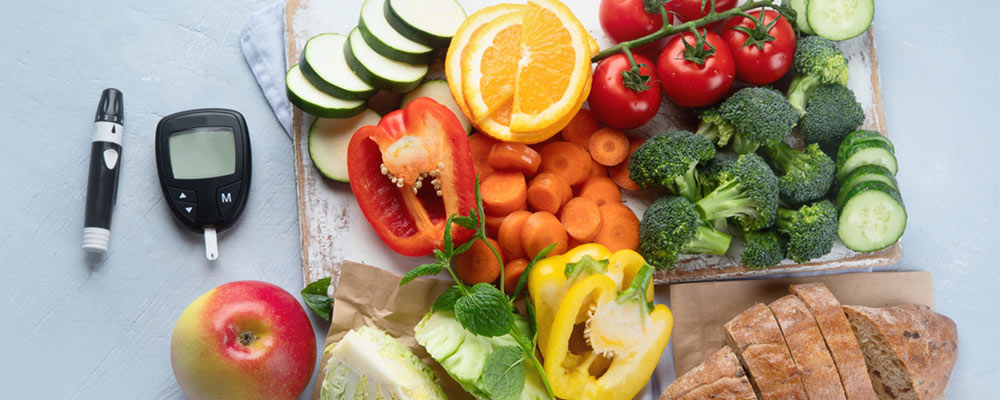Last Updated on June 22, 2022
Introduction
Insulin is the hormone that helps our body use glucose (sugar). In diabetes, your body may not be able to use glucose because of the deficiency or ineffectiveness of insulin. There are 2 major classifications of Diabetes — Type and Type 2. Taking diabetes and insulin medication is often an important part of treating your diabetes and getting your blood glucose levels in control.
In addition to healthy lifestyle choices, physical activity, healthy eating, and sleeping habits. Getting your diabetes in control is a possibility.
Understanding Insulin Resistance
In Type 1 diabetes, your body is unable to produce sufficient insulin. And, in Type 2 diabetes, your body can produce insulin but is unable to respond to it. This is otherwise known as Insulin Resistance.
In Type 1 diabetics, and many Type 2 diabetics, treatment with Insulin is a requirement.
The normal pancreas makes a small amount of insulin at all times (called ”basal insulin”). Upon ingestion of food, a significantly greater amount of insulin is produced to help your body burn the carbohydrates release from digested food. This insulin is also known as “bolus” or “prandial” insulin. It is usually release 1 to 2 hours after consumption of food.
Insulin Medication
Depending on the type and severity of diabetes, your physician will recommend different insulin regimens (also known as Insulin Plans). These may or may not be given with your oral diabetes medicines. Over time, diabetics can develop severe complications such as stroke, eye damage, hypertension, diabetic nerve pain and damage, etc. due to the increase in blood glucose levels. Including diabetes and insulin medication can help diabetics a lot, to the point that living a normal, healthy life is a possibility.
Commercially available insulin can be broadly divided into two kinds:
Slow Acting (Long-Acting):
These include insulin preparations that start acting gradually and last for 12-24 hours. Examples include LANTUS, LEVEMIR, TOUJEO, TRESIBA, or NPH (Humulin or Novolin-N). NPH lasts for about 12 hours and may have a slight peak after 6 hours. Which may increase the probability of hypoglycemia (low blood glucose).
Fast (Short) Acting:
These preparations are taken before major meals and because of their rapid action, they prevent blood glucose from increasing drastically after meals. Examples include Humolog, Novolog, Fiasp, Lyumjev, and Apidra. This group of Insulin medication starts acting within 10 minutes of administration and should generally be taken just before eating. Humulin-R or Novolin-R are older preparations (also called Regular insulin) that take 20-30 minutes to work and may last longer in your system.
Premixed Insulin:
Sometimes slow and fast insulin is mixed in formulations such as Humulin 70/30 or Novolin 70/30 (NPH and regular insulin) and Humalog 75/25 or Novolog 70/30 (NPH and Humalog/Novolog). These preparations are simple to use. Many people with diabetes can not get comparable results to more complicated insulin plans. Meal timing and exercise levels have to be kept similar from one day to another with these preparations.
 Insulin Plans
Insulin Plans
Once-daily Plan:
In some patients with type 2 diabetes, slow insulin (e.g. Lantus or Levimir) is used to supplement oral medications (diabetes pills) and control blood sugar levels. This method is useful when glucose levels are only moderately high and the pancreas can still make some insulin. Insulin injection is given at bedtime and the dose is generally adjusted to get a fasting glucose level of <120 mg/dl. Good glucose level readings in the morning may allow the diabetes pills to be more effective during the day.
Twice-daily Insulin Plan:
For some people with type 2 diabetes, twice daily injection of a combination of ‘slow’ and ‘fast’ insulin may allow fairly good control of blood glucose levels. Typically a dose of pre-mix insulin (70/30 insulin) is given 10-15 minutes before breakfast and another dose before the evening meal.
Intensive Insulin Plan:
The best method to control diabetes via insulin is by administrating the “fast” insulin before each meal (e.g. Humalog, Novolog). These are usually given 5-10 minutes before major meals, and “slow” insulin, once daily (Lantus or Levemir is given usually at bedtime). This combination mimics the natural insulin release and allows for the most flexibility in time. With the help of diabetes educators, you may learn how to count the number of carbs in your meals and take a proportional dose of ‘fast’ insulin to cover that meal. An additional sliding scale may be given to cover high blood sugar (please note that Humalog or Novolog is given to cover Carbs and high blood sugars).
Insulin Dose Adjustments
People with diabetes must check their blood glucose levels regularly (at least 2-4 times a day). This will allow your doctor to adjust the insulin dose and also detect hypoglycemia (low blood glucose levels) if you have it. After receiving in-depth training, some diabetics may be able to make minor adjustments in their insulin doses to get their blood glucose readings within the target range.
Here are some examples detailing Insulin Dose Adjustments that may be able to help you:
- For patients taking Lantus at night, the dose can be increased by ~2 units every 3 to 5 days if the fasting blood glucose levels (early morning / before breakfast) falls in the range of >130-140 mg/dL.
- If blood glucose levels are already high at bedtime, then the evening (dinner) dose of diabetes pills or evening (pre-dinner) insulin may need to be increase accordingly.
- For patients taking premixed insulin (70/30):
– If blood glucose levels are high at lunch and dinner time (>140-175 mg/dL), the morning dose may be increased by 2 units (after 3-5 days of observation).
– If blood glucose levels are high at bedtime (>140 mg/dL) or in the fasting state (>140mg/dL), the dinner dose of 80/30 insulin may be increased by 2 units
(after 3-5 days of observation).
- Similarly, if blood glucose levels are low (<70 mg/dL), a reduction of insulin dose may be necessary.
The Takeaway
There are multiple Insulin medication, and treatment regimens for diabetes that may be able to help you. Choosing the best option for you all boils down to a variety of factors such as diet, physical activity, and your body. With the help of your doctor, and with a little bit of planning, insulin treatments can help you get your life and blood sugar levels in control.
By taking charge, you may be able to control your Diabetes and prevent severe complications associated with it. The American Diabetes Association has multiple resources and tools that may help you help you understand Diabetes a bit better. Good luck!
This information is for general knowledge & is not a substitute for medical advice your doctor recommends.


 Insulin Plans
Insulin Plans